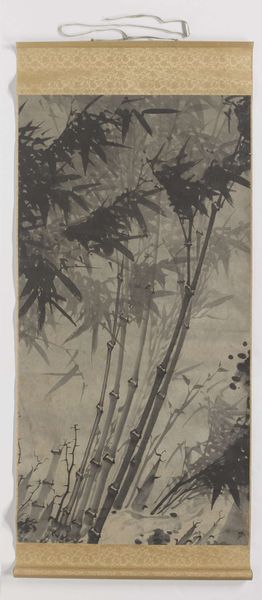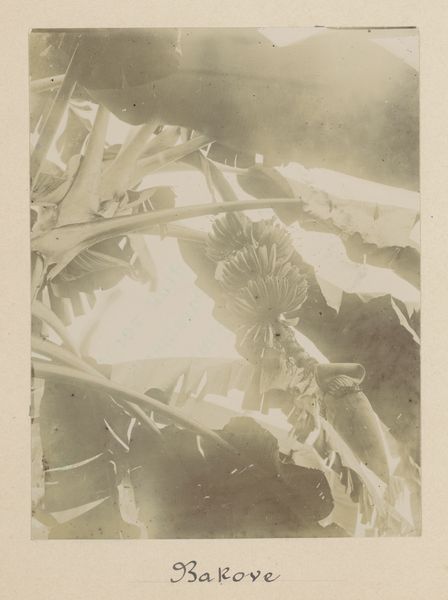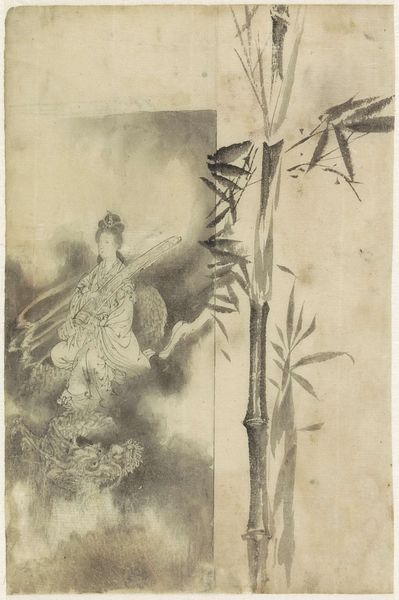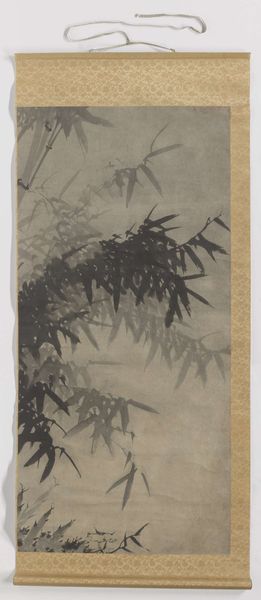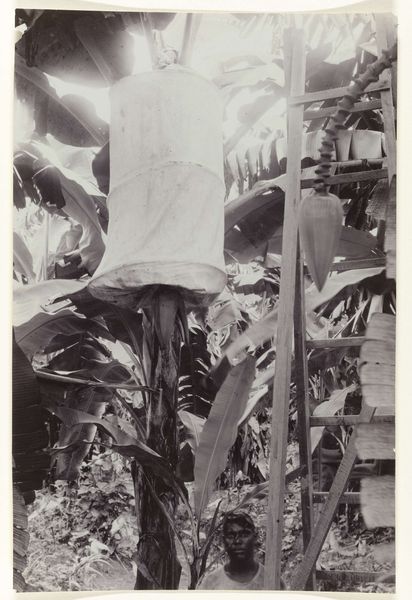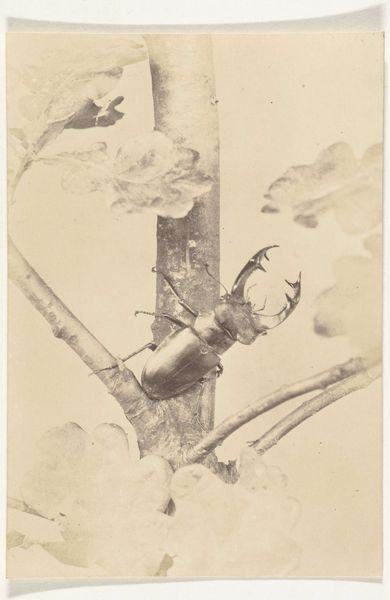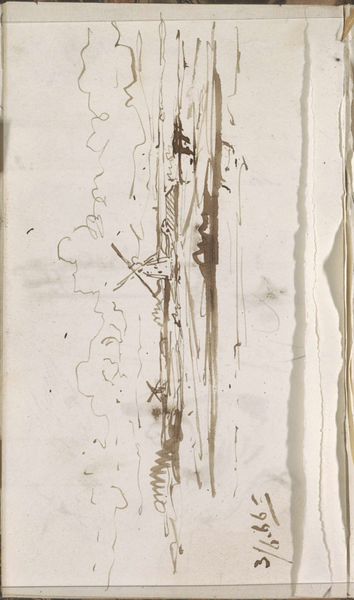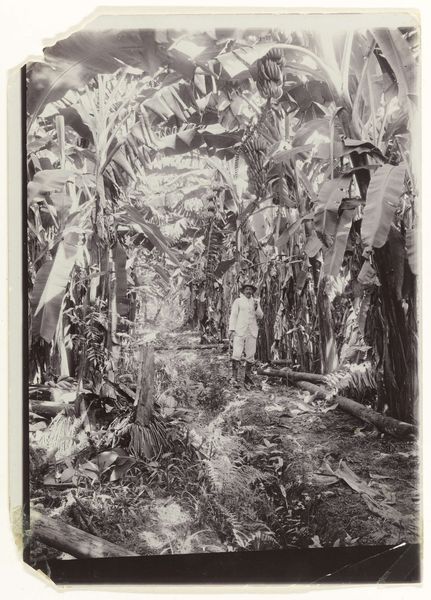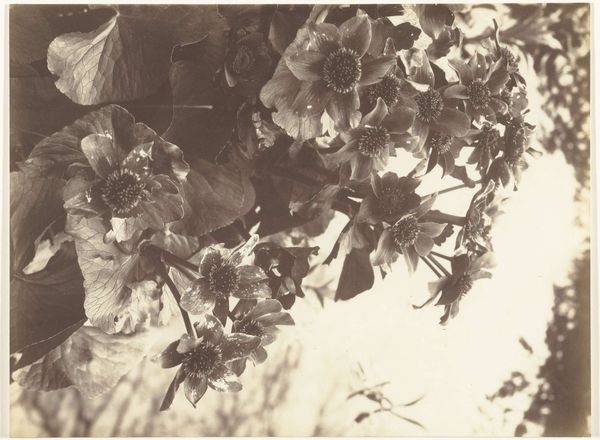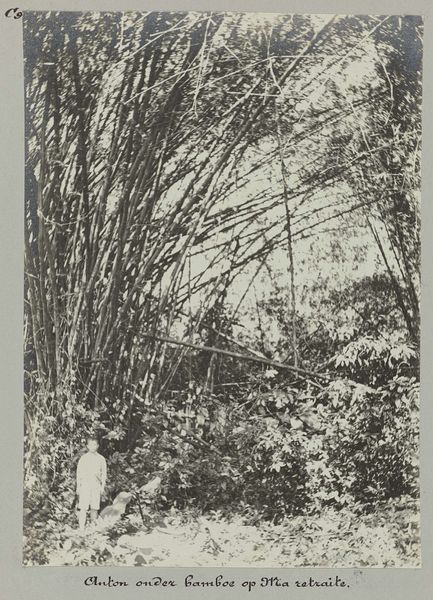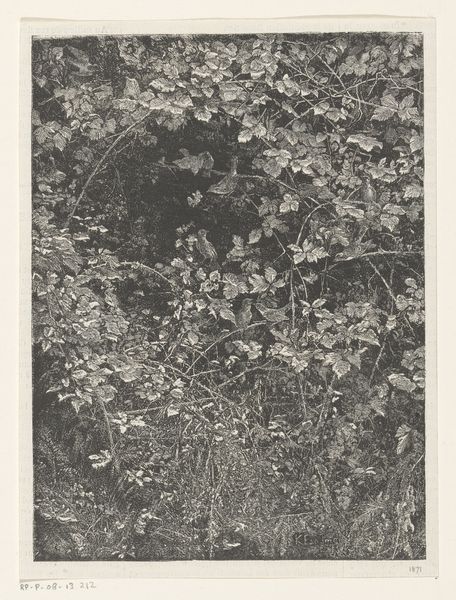
drawing, paper, ink
#
drawing
#
asian-art
#
landscape
#
paper
#
ink
#
watercolor
Dimensions: height 140.9 cm, width 72.4 cm, width 738 mm, width 745 mm, diameter 47 mm, height 8 cm, width 78.5 cm, depth 26 cm
Copyright: Rijks Museum: Open Domain
Curator: Take a moment with this hanging scroll attributed to Zhengxing, also known as Wuzhai, entitled “Bamboo.” Likely created sometime between 1675 and 1750. It’s an ink drawing on paper. What’s your initial impression? Editor: Stark. Austere, almost. The composition, rendered primarily in monochrome ink, focuses on varying densities and forms that, together, capture the lightness of bamboo. Curator: Zhengxing was a prominent figure who came from a long line of painters and served in official capacities, including posts within painting academies and even involvement with imperial commissions. These artists frequently acted within circles promoting social and political reform through artwork. Does this history contextualize the simplicity you noted? Editor: It does lend an interesting angle. Knowing his social background and perhaps intentions, I begin seeing this not just as an aesthetic piece but also an assertion of certain cultural or ethical values in visual form, or his values at least. The brushstrokes, although appearing spontaneous, are very deliberate. Curator: Right, the single, pure line, economical brushstrokes... all allude to broader concepts central to literati painting and Neo-Confucianism in that historical moment. A refined and moral approach during the early Qing dynasty that was meant to critique some figures and their displays of corruption and wealth through artistic means. The subject is not solely bamboo, but a perspective on virtue, isn’t it? Editor: Precisely. Note how Zhengxing uses varying ink washes to create depth, guiding your eye throughout the picture. The varying perspectives make it clear how art imitates life in that these bending bamboo convey themes of resilience and grace—which is remarkable to express using solely the bare minimum of tools, strokes and materials. Curator: Yes. Its cultural function becomes clearer when recognizing Zhengxing as a voice shaping a larger narrative of proper leadership and ethical behavior amidst dynastic transitions. This artwork participates in this important social discourse through its simple depiction. Editor: I concur. Beyond merely appreciating its aesthetic, viewing it now gives me access to understanding broader historical dynamics and cultural practices through the vision of the artist. Curator: Exactly. This close examination unveils not just aesthetic skill but social activism. Thank you. Editor: A fascinating intersection of artistic expression and cultural history; it offers a great opportunity for visitors to understand and delve more deeply into those topics.
Comments
rijksmuseum about 2 years ago
⋮
These four hanging scrolls are examples of Chinese bamboo painting. Central to this genre is mastery of the brush. The bamboo stem segments as well as the individual leaves are all rendered with just a single brushstroke. The artist worked fairly wet and, in addition to grey tints, made ample use of an undiluted deep black ink to create an atmosphere of lush and moist vegetation.
Join the conversation
Join millions of artists and users on Artera today and experience the ultimate creative platform.
